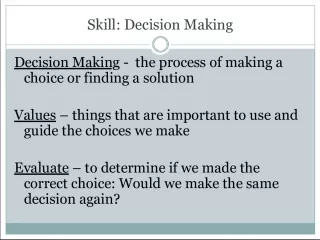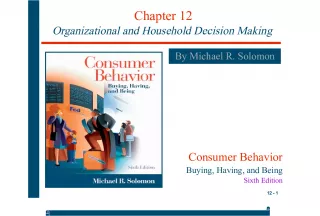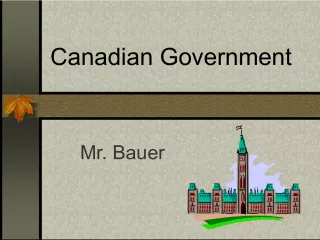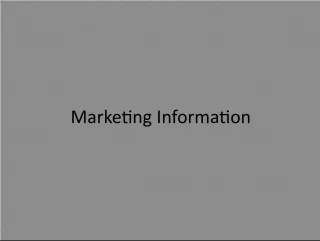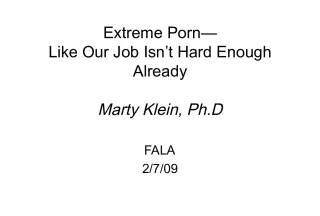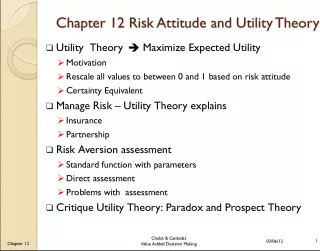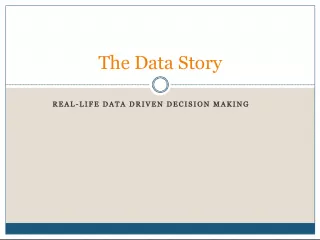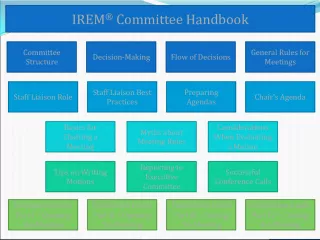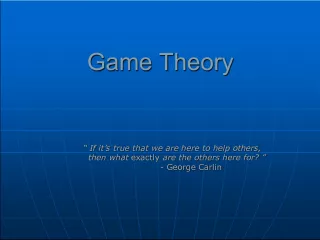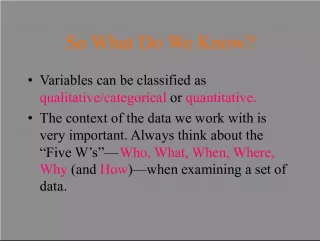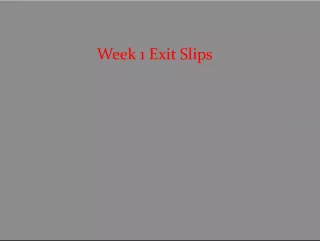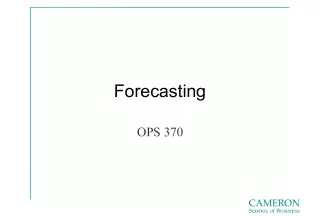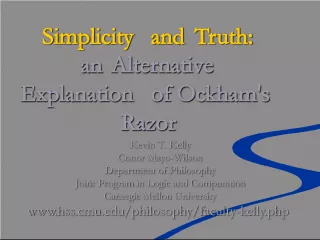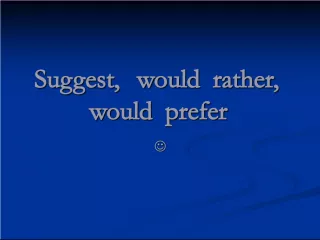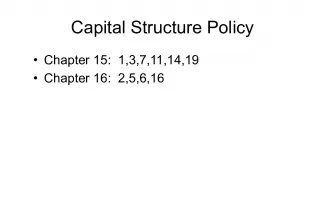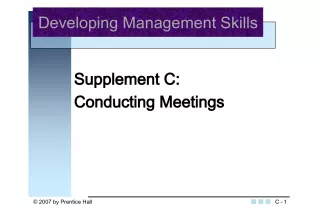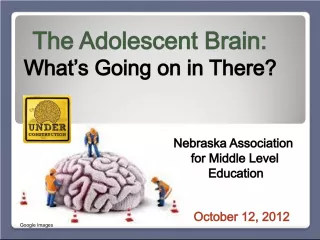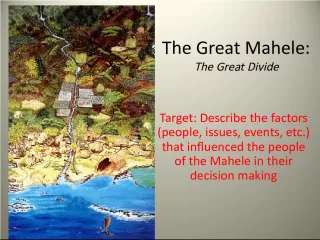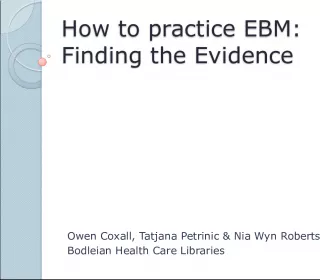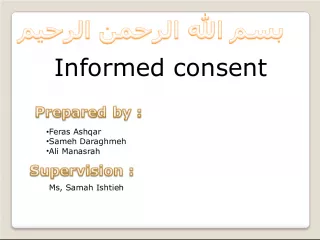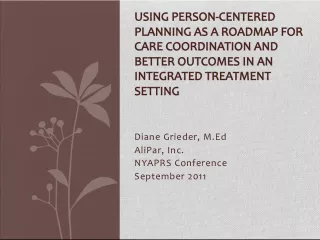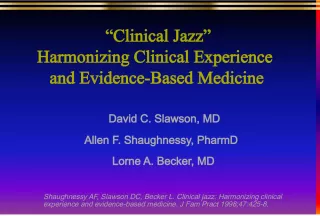Understanding Decision Making


This text defines decision making as the process of developing and analyzing alternatives and choosing from among them. It highlights that the set of available alternatives is crucial in decision making, and that we should not spend too much time
- Uploaded on | 2 Views
-
 hollyross
hollyross
About Understanding Decision Making
PowerPoint presentation about 'Understanding Decision Making'. This presentation describes the topic on This text defines decision making as the process of developing and analyzing alternatives and choosing from among them. It highlights that the set of available alternatives is crucial in decision making, and that we should not spend too much time. The key topics included in this slideshow are . Download this presentation absolutely free.
Presentation Transcript
Slide1copyright © 2004 prentice hall. all rights reserved.3–1 Understanding Decision Making • Decision A choice made between available alternatives. So, the decision is not nearly as important as the set of alternatives We spend so much time agonizing over decisions with limited (bounded) alternatives • Decision Making The process of developing and analyzing alternatives and choosing from among them. How can we ensure that we have the best possible set What are some of the approaches used to achieve this – This chapter deals with many of these issues
Slide2copyright © 2004 prentice hall. all rights reserved.3–2 Understanding Decision Making • Problem A discrepancy between a desirable and an actual situation. Yet another step in the decision-making process What truly is the problem at hand… If you miss diagnose the problem – How you can you create effective, plausible alternatives • Judgment The cognitive, or “thinking,” aspects of the decision- making process. Many issues to deal with here. This is where most of the errors occur – Why?
Slide3copyright © 2004 prentice hall. all rights reserved.3–3 Types of Decisions • Programmed Decision A decision that is repetitive and routine and can be made by using a definite, systematic procedure. Really has no cognitive function Can be handled through automation/planning 90% of problems / 10 % of the influence • Nonprogrammed Decision A decision that is unique and novel. No past information to help make the decision Requires a whole new set of alternatives Creativity and Innovation 10% of the problems / 90 % of the influence
Slide4copyright © 2004 prentice hall. all rights reserved.3–4 Types of Decisions The Principle of Exception “Only bring exceptions to the way things should be to the manager’s attention. Handle routine matters yourself.”
Slide5copyright © 2004 prentice hall. all rights reserved.3–5 Decision-Making Models • The Classical Approach Know all alternatives and can assess each one against each criterion. Again, an issue of bounded rationality Resource allocation (theory) Accurately calculate and choose the alternative with the highest perceived value. Perceived by who and under what conditions This is where guidelines and procedures help Make an “optimal” choice without being confused by “irrational” thought processes. Remove the individual from the decision-making process
Slide6copyright © 2004 prentice hall. all rights reserved.3–6 Decision-Making Models • The Classical Approach Have complete or “perfect” information about the situation. Bounded Rationality Assumption that managers had comprehensive and perfect information when making decisions – Reality Most decisions made based on imperfect information Distinguish perfectly between the problem and its symptoms. Assumption that managers could distinguish really see the problem – Reality Often times the two are very difficult to separate Identify all criteria and accurately weigh all the criteria according to preferences. Assumption that managers could objectively assess and rank all the issues related to a given problem – Reality Even if we wanted to… – Human’s can only handle a finite limited amount of information – Very time contingent
Slide7copyright © 2004 prentice hall. all rights reserved.3–7 Decision-Making Models (cont’d) • The Administrative Approach Bounded Rationality (Herbert Simon) The boundaries on rational decision making imposed by one’s: – Values • Beliefs, Norms, and Attitude – Abilities • Skill sets, Education, etc. – Limited capacity for processing information. • IQ Satisfice To stop the decision-making process when satisfactory alternatives are found – Rather than to review solutions until an optimal alternative is discovered. – How/Why do we do this? • Is it the same for all decisions made…
Slide8copyright © 2004 prentice hall. all rights reserved.3–8 Checklist 3.1 The Decision-Making Process Define the problem. Accurately diagnose the problem Separate from symptoms Clarify your objectives. What do you want to do about it Identify alternatives. Make sure to get maximum input and coverage Analyze the consequences. One answer may seem ad hoc / post hoc Make a choice. There is no choice…
Slide9copyright © 2004 prentice hall. all rights reserved.3–9 Step 1. Define the Problem 1. Start by writing down your initial assessment of the problem. 1. We know this is limited (bounded) 2. Still, it helps get at the true nature of the problem 2. Dissect the problem. What is the trigger of this problem? What were the antecedents that creates this problem Is it my problem to solve? Many times the problem is beyond our scope or influence What is the connection between the trigger and the problem? How do we keep this problem from recurring
Slide10copyright © 2004 prentice hall. all rights reserved.3–10 Step 2. Clarify Your Objectives • Specific, understandable, action oriented 1. Write down all the concerns you hope to address through your decision. 2. Convert your concerns into specific, concrete objectives. 3. Separate ends from means to establish your fundamental objectives. 4. Clarify what you mean by each objective. 5. Test your objectives to see if they capture your interests.
Slide11copyright © 2004 prentice hall. all rights reserved.3–11 How to Clarify Your Objectives Goal-Setting Theory Write down all the concerns you hope to address through your decision. Convert your concerns into specific, succinct objectives. Separate ends from means to establish your fundamental objectives. Clarify what you mean by each objective. Test your objectives to see if they capture your interests.
Slide12copyright © 2004 prentice hall. all rights reserved.3–12 Step 3. Identify Alternatives 1. Generate as many alternatives as you can yourself. 1. Even if they don’t make sense 2. The goal here is to assess all possible solutions 2. Expand your search 1. Checking with other people 2. Experts. 1. Help remove the biases 3. How will these alternatives be implemented 1. Are the plausible, doable 4. Know when to stop.
Slide13copyright © 2004 prentice hall. all rights reserved.3–13 Step 4. Analyze the Consequences 1. Mentally put yourself into the future. Process Analysis Solving problems by thinking through the process involved from beginning to end – Holistic view of the process 2. Eliminate any clearly inferior alternatives. 3. Organize your remaining alternatives into a table (matrix) 1. That provides a concise 2. All-encompassing view of the consequences of pursuing each alternative. 1. Find a way to have as much information as possible
Slide14copyright © 2004 prentice hall. all rights reserved.3–14 Step 5. Make a Choice • Analyses are useless unless the right choice is made. Under perfect conditions Simply review the consequences of each alternative Choose the alternative that maximizes benefits. In practice, making a decision Even a relatively simple one like choosing a computer Usually can’t be done so accurately or rationally. What you want Create a system that allows for “subjective” inputs into an “objective” checks and balances in decision-making
Slide15copyright © 2004 prentice hall. all rights reserved.3–15 How To Make Better Decisions 1. Increase Your Knowledge Ask questions. Get experience. Use consultants. Do your research. Force yourself to recognize the facts when you see them (maintain your objectivity). 2. Use Your Intuition A cognitive process whereby a person instinctively makes a decision based on his or her accumulated knowledge and experience.
Slide16copyright © 2004 prentice hall. all rights reserved.3–16 How To Make Better Decisions (cont’d) 3. Weigh the Pros and Cons Quantify realities by sizing up your options, and taking into consideration the relative importance of each of your objectives. Sometimes big decisions are actually a collection of much smaller decisions that can be taken one at a time 4. Don’t Overstress the Finality of Your Decision Remember that few decisions are forever. Knowing when to quit is sometimes the smartest thing a manager can do. 5. Make Sure the Timing Is Right At the end of the day you can only make a decision based on the information in front of you
Slide17copyright © 2004 prentice hall. all rights reserved.3–17 Are You More Rational or More Intuitive? FIGURE 3–2 Source: Adapted and reproduced by permission of the Publisher, Psychological Assessment Resources. Inc., Odessa FL 33556, from the Personal Style Inventory by William Taggart, Ph.D., and Barbara Hausladen. Copyright 1991, 1993 by PAR, Inc.
Slide18copyright © 2004 prentice hall. all rights reserved.3–18 FIGURE 3–3 Decision Matrix
Slide19copyright © 2004 prentice hall. all rights reserved.3–19 Checklist 3.3 Making a Choice Increase your knowledge. Use your intuition. Weigh the pros and cons. Don’t overstress the finality of your decision. Make sure the timing is right.
Slide20copyright © 2004 prentice hall. all rights reserved.3–20 Creativity and Decision Making • Creativity The process of developing original, novel responses to a problem. Best fostered in a neutral context Culture for creativity • Brainstorming A creativity-stimulating technique in which Prior judgments and criticisms are specifically forbidden from being expressed Meant to encourage the free flow of ideas Must ensure that all influences are removed
Slide21copyright © 2004 prentice hall. all rights reserved.3–21 Checklist 3.4 How to be More Creative Create a culture of creativity. Encourage brainstorming. Suspend judgment. Get more points of view. Provide physical support for creativity. Encourage anonymous input.
Slide22copyright © 2004 prentice hall. all rights reserved.3–22 Decision-making Shortcuts and Traps • Using a Heuristic Applying a rule of thumb or an approximation as a shortcut to decision making. They do have there place They are very helpful in the montage of decisions we make on a daily basis Similarity Using a affirmed short-cut to make decision We wouldn’t use it if it did not serve us Availability Recent and readily available information Think about this – How pervasive is this…
Slide23copyright © 2004 prentice hall. all rights reserved.3–23 Decision-making Shortcuts and Traps • Anchoring Unconsciously giving disproportionate weight to the first information available. – Negative impact – Surprising effect No matter what anyone says perceptions are set • Adopting a Psychological Set The tendency to rely on a rigid strategy or approach when solving a problem. Confining yourself to a familiar, effective way of handling problems – Can lead to entrenchment – Very close-minded view of possible solution sets
Slide24copyright © 2004 prentice hall. all rights reserved.3–24 Decision-making Shortcuts and Traps (cont’d) • Perception (Personal Bias) The unique way each person defines stimuli Depending on the influence of past experiences The person’s present needs and personality. Perception is reality This is not a bad thing It gives us the ability to provide multiple, varying solutions We are slaves to our five senses (cognition) Realist vs. Constructivist Where so you stand?
Slide25copyright © 2004 prentice hall. all rights reserved.3–25 Source: Lester A. Lefton and Laura Valvatine, Mastering Psychology , 4th ed. Copyright © 1992 by Allyn & Bacon. Reprinted by permission. FIGURE 3–4 Looking at the Problem In Just One Way
Slide26copyright © 2004 prentice hall. all rights reserved.3–26 Source: Max H. Bazerman, Judgment in Managerial Decision Making . Copyright © 1994 Wiley, p. 93. Reprinted by permission of Wiley. FIGURE 3–5 The Advantage of Not Just Looking at the Problem in One Way
Slide27copyright © 2004 prentice hall. all rights reserved.3–27 Source: Applied Human Relations , 4th ed., by Benton/Halloran cW 1991. Reprinted by permission of Prentice-Hall, Upper Saddle River, NJ. FIGURE 3–6 Using Creativity to Find a Solution
